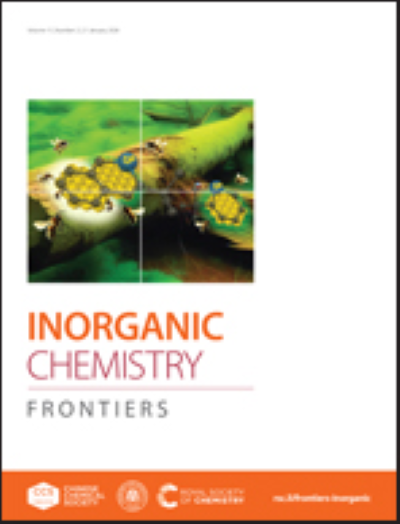应用于电容去离子的工程二硫化钼纳米材料
IF 6.1
1区 化学
Q1 CHEMISTRY, INORGANIC & NUCLEAR
引用次数: 0
摘要
电容去离子技术是一种极具发展前景的水中离子去除技术,在咸水脱盐和废水修复等方面具有广阔的应用前景。CDI具有节能、操作简单、可逆性好、长期稳定、与其他技术耦合可行性高等特点。与超级电容器类似,电极材料在决定CDI性能方面起着至关重要的作用,例如工作电压、脱盐能力和CDI电池的生命周期。二硫化钼(MoS2)是一种典型的二维(2D)金属硫化物,由于其特殊的机械、电学和光学性质,在CDI技术中受到了极大的关注。在此,我们批判性地报道了CDI电池中MoS2基电极的库存和合理设计的最新进展。我们首先简要介绍CDI系统的基础知识和二硫化钼的结构。为了使综述更加全面,我们总结了制备MoS2基纳米材料的常用技术,包括各种剥离工艺、化学气相沉积、胶体合成、水热/溶剂热合成和熔盐合成。重点综述了近年来二硫化钼基电极在CDI中的应用进展。这些系统分为原始的MoS2和各种基于MoS2的复合材料,如碳,导电聚合物,金属氧化物,MXene和C3N4。为了帮助进一步开发高效和长期稳定的二硫化钼电极,概述了一些挑战和可能的解决方案。本文章由计算机程序翻译,如有差异,请以英文原文为准。
Engineered Molybdenum Disulfide-based Nanomaterials for Capacitive Deionization Application
Capacitive deionization (CDI) is a highly promising technique for removal ions from water, showing great perspective in desalination of salty water and wastewater remediation. CDI displays an energy efficiency, simple operation, excellent reversibility, long-term stability, and high feasibility for coupling with other techniques. Similar to supercapacitors, the electrode materials play crucial role in determining CDI performance, such as operating voltage, desalination capacity, and the lifecycle of CDI cells. Molybdenum disulfide (MoS2), a typical two-dimensional (2D) metal sulfide, has gained tremendous attention in CDI technique due to its exceptional mechanical, electrical, and optical properties. Herein, we critically reported deliberated the inventory and the recent progress in the rational design of MoS2 based electrodes for CDI cells. We start with a brief introduction to foundation knowledge of CDI system and structure of MoS2. To make the review comprehensive, we then summarized the available common techniques to prepare MoS2 based nanomaterials, spanning from various exfoliation processes, chemical vapor deposition, colloidal synthesis, hydrothermal/solvothermal synthesis, and molten salt synthesis. Significantly, the recent progress of MoS2 based electrodes in CDI application is summarized in detail. These systems are divided into pristine MoS2 and various MoS2 based composite with other species, such as carbon, conducting polymer, metal oxide, MXene, and C3N4. For assisting further development of MoS2 electrodes for efficient and long-term stable CDI, some challenges and possible solutions are outlined.
求助全文
通过发布文献求助,成功后即可免费获取论文全文。
去求助
来源期刊

Inorganic Chemistry Frontiers
CHEMISTRY, INORGANIC & NUCLEAR-
CiteScore
10.40
自引率
7.10%
发文量
587
审稿时长
1.2 months
期刊介绍:
The international, high quality journal for interdisciplinary research between inorganic chemistry and related subjects
 求助内容:
求助内容: 应助结果提醒方式:
应助结果提醒方式:


